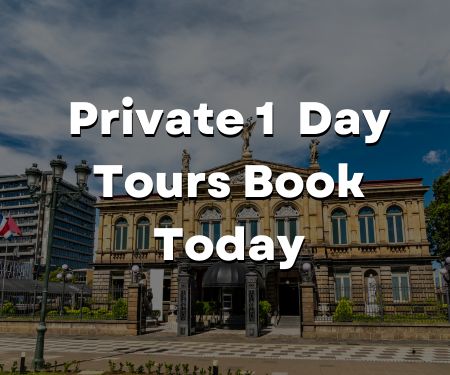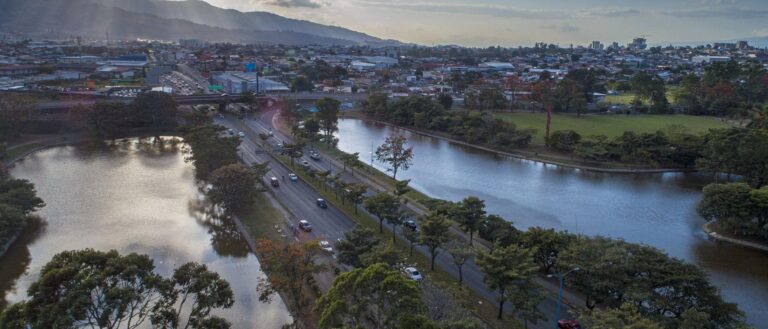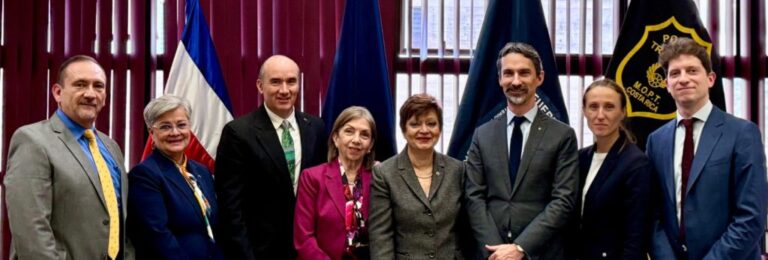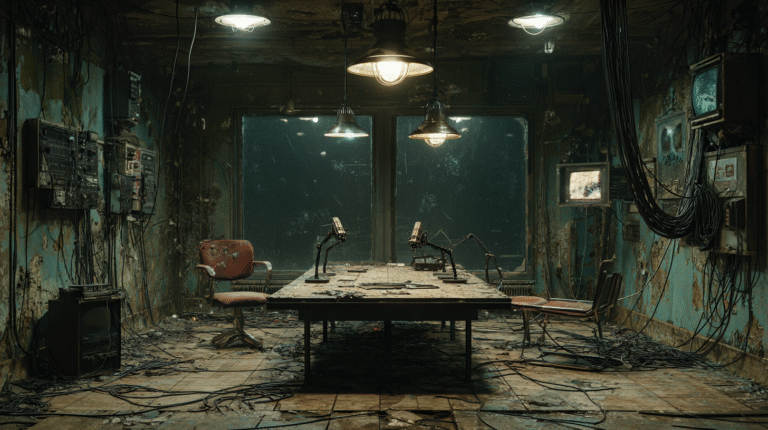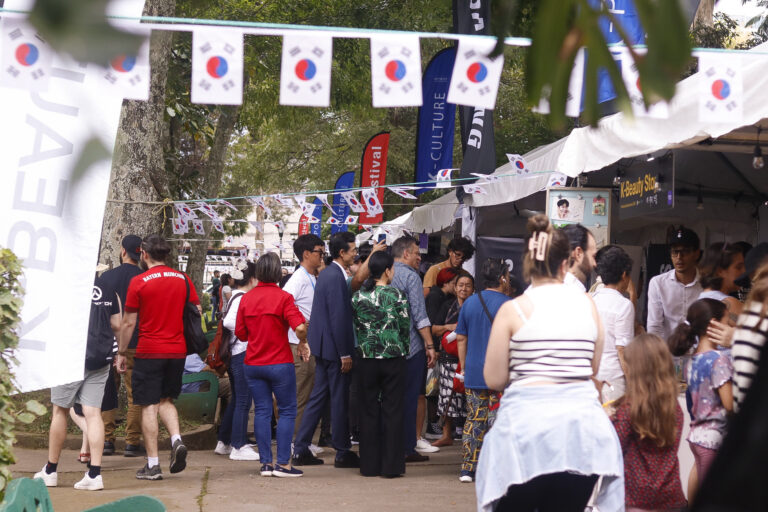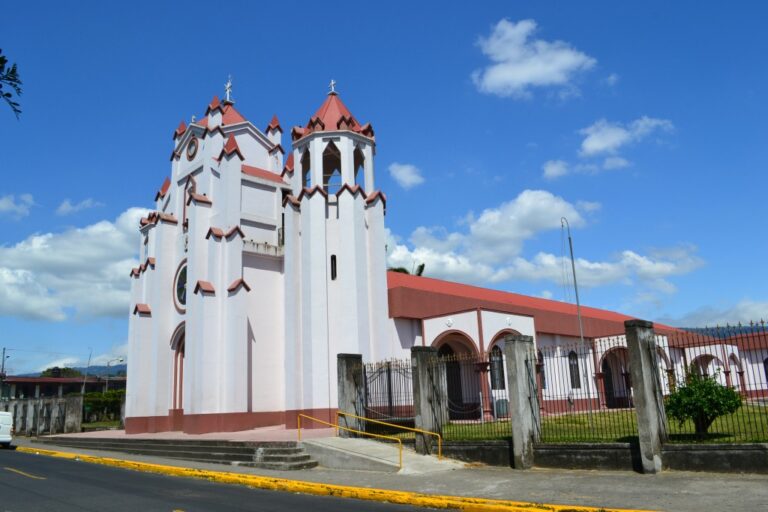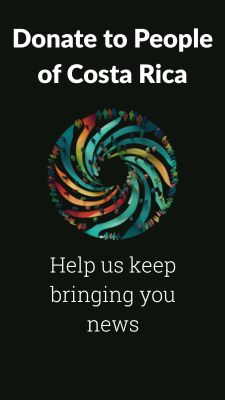The Ministry of Environment and Energy (MINAE), the Ministry of Culture and Youth (MCJ), and the Municipality of San José presented the designs, master plan, and General Management Plan for the Simón Bolívar Urban Natural Park (PNUR) this Monday, August 18th.
The proposal was developed by the Friends of Nature Association of the Central and South Pacific (ASANA), with financing from the Transition to a Green Urban Economy (TEVU) Project and MINAE through the Central Conservation Area (ACC). This contribution is part of the Sustainable Cities Impact Program of the Global Environment Facility (GEF 7), implemented by the United Nations Development Programme (UNDP) and the Organization for Tropical Studies (OTS).
The announcement was made at the National Museum of Costa Rica and was attended by Franz Tattenbach Capra, Minister of MINAE; Jorge Rodríguez Vives, Minister of MCJ; and Luis Diego Miranda Méndez, Mayor of San José. The event was held within the framework of the National Parks Month celebrations.
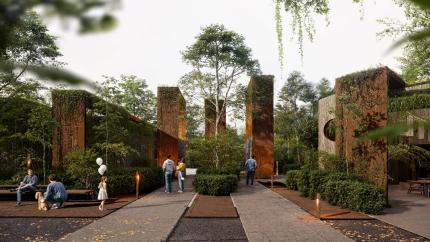
During the presentation, ASANA provided a realistic projection of what the former zoo will become, now converted into the first Urban Natural Park in the Greater Metropolitan Area, encompassing a unique cultural and heritage circuit.
“Reimagining our heritage” is the phrase that inspired the new infrastructure proposal, which focuses on leveraging previous construction footprints and adapting the spaces with a fresh, modern, yet respectful approach to the site’s historical legacy.
Additionally, the General Management Plan was presented, which is the official instrument for establishing the essential pillars for the administration and management of the Simón Bolívar Urban Natural Park over the next 10 years.
The forest and its biodiversity, aquatic ecosystems, architectural and cultural heritage, as well as spaces for recreation, education, and public well-being are the main aspects sought to be restored and protected on the site. Three strategies have been proposed for this: the first focuses on the conservation, restoration, and research of the natural landscape; the second on the restoration and protection of architectural and cultural heritage; and the third on the restoration and maintenance of spaces for public integration and well-being.
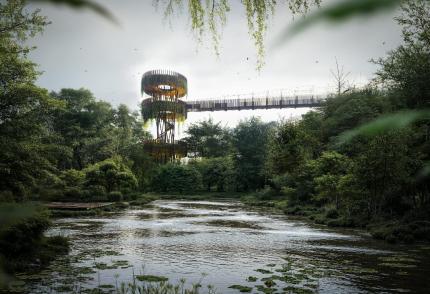
“It is a significant milestone to convert a former state-run zoo into the first Urban Natural Park of the Greater Metropolitan Area, because it not only demonstrates this administration’s commitment to safeguarding wildlife, but it is also the result of the joint efforts between local and central government. Furthermore, it comprises a unique cultural and heritage circuit in the heart of San José for citizens to enjoy. We are fulfilling the commitment we made months ago and have worked hard with allies from multiple sectors to protect and restore this environmental and cultural gem,” explained Franz Tattenbach, Minister of Environment and Energy.
The Simón Bolívar UNP spans 2.63 hectares, is located in the Carmen district, and is part of the Río Torres Interurban Biological Corridor. Since its opening to the public in 1921, the space has evolved and adapted to different societal visions of what a space for recreation and contact with nature should be. The site still preserves original elements that allow its history to be reconstructed, and for this reason, the Ministry of Culture and Youth has identified a circuit of high historical and heritage value that will constitute a new feature to highlight for the enjoyment of its visitors.
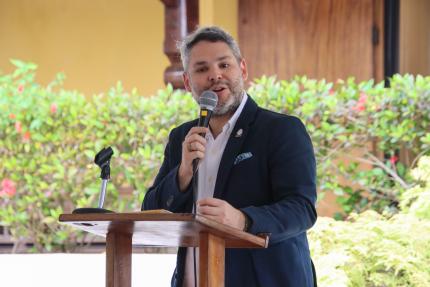
“In this emblematic space, which for decades was home to the Simón Bolívar Zoo, we have defined a new way of understanding art, culture, and nature. Therefore, and thanks to the National Museum of Costa Rica, one of that institution’s natural collections will be transferred to these grounds, creating an environment for learning, research, recreation, and enjoyment for everyone. The old cages that once housed animals will be transformed into recreational, educational, and art exhibition spaces. We want them to become living areas, open to creativity, cultural enterprises, and community gatherings, thus contributing to local economic revitalization,” mentioned Jorge Rodríguez Vives, Minister of Culture and Youth.
In the short term (1-3 years), the diagnostic and planning phases are expected to be completed, along with the implementation of essential actions for public opening. Subsequently, in the medium term (3-5 years), actions for the maintenance and recovery of existing infrastructure should be completed, and in the long term (5-10 years), the development of new infrastructure will be completed to expand the offering of services and opportunities for recreation, education, leisure, and mental health.
“We are pleased to recognize it as significant progress that concrete plans for the intervention of Simón Bolívar Park already exist. From the Municipality of San José, we have held meetings with the Ministry of Environment and Energy (MINAE) to determine the scope of our participation in this project. In the coming weeks, we will precisely define the scope of that collaboration. So far, we have maintained a very satisfactory dialogue with the National System of Conservation Areas (SINAC), which has opened up the possibility for the Municipality to use some of its facilities for community activities. Likewise, the option has been raised for the local government to contribute resources to the recovery of certain areas of the park. All these aspects will be formally established in the coming weeks through the signing of an agreement,” indicated Diego Miranda Méndez, Mayor of the Municipality of San José.
The total investment, including operations and investment in the new infrastructure, is estimated at 8 million dollars.




